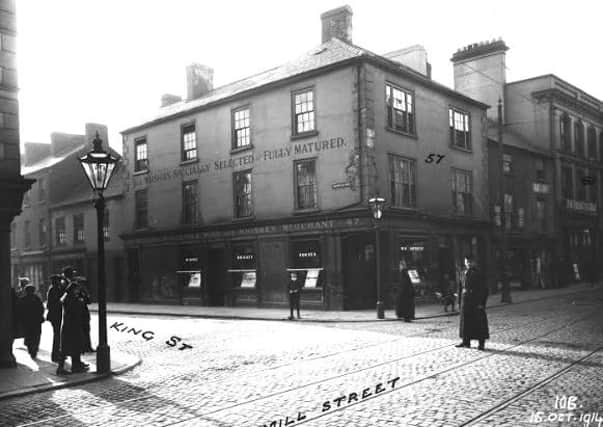Fascinating tales from city's Folktown district


The Folktown Heritage booklet was produced with the help of historian and author Dr Eamon Phoenix, who has researched the area with its colourful past and maze of narrow streets with names such as Squeeze Gut Entry and Crooked Lane.
The booklet is part of an oral history project funded by the Heritage Lottery Fund. An online audio archive is also available.
Advertisement
Hide AdAdvertisement
Hide AdThe project is the result of months of interviews with people who lived and worked in the bustling Smithfield, King Street, Castle Street, Bank Street and Berry Street area of the city.
At the launch in King Street, Dr Phoenix shared many stories of the people who lived and worked in the area, which was the focal point of the small Catholic population of Belfast back in the 18th century.
Dr Phoenix said Castle Street was the main thoroughfare of this western part of the old town.
He added: “In 1756 Castle Street had a generally run-down appearance with low ruinous thatched cabins. By the 1790s however it had become caught up in the hurly- burly of Irish revolutionary politics associated with the rise of the United Irishmen, founded in Belfast by Wolfe Tone in 1791.”
Advertisement
Hide AdAdvertisement
Hide AdCastle Street was also the scene of two theatres in Georgian Belfast and by the end of the 1820s was a blend of private houses and milliners and dressmakers shops. By 1900 there were pubs, fish and fruit merchants and cabinetmakers.
Dr Phoenix spoke of the many characters who lived in the area including Sean MacEntee, the only Belfast man sentenced to death for his part in the Easter Rising.
His friend, Belfast Unionist Councillor Tommy Alexander helped him escape execution and his death sentence was commuted to penal servitude.
And there was also the firebrand preacher, ‘Roaring Hugh Hanna’ who was Minister of Berry Street Presbyterian Church in the 1850s, was known for his anti-Catholic sermons and his opposition to Irish self-government.
Advertisement
Hide AdAdvertisement
Hide AdReligious worship was and remains a feature of the area and in 1784, ‘old St Mary’s’, the first Catholic Chapel to be built in Belfast was opened in Chapel Lane on the site of the present day church. The church was financed with the help of Protestant residents of the town.
A few of the old buildings remain from the 18th and 19th centuries including historic Kelly’s Cellars (around 1780) which was managed by Belfast Nationalist politician ‘wee Joe’ Devlin in the 1890s and the Hercules Bar and Restaurant on the corner of Castle Street and Chapel Lane which was built in 1840.
A team of dedicated researchers was put together to record interviews, research archive material and gather as many stories as possible.
Folktown CIC Director Sophie Rasmussen said: “This part of Belfast is undergoing a renaissance with the refurbishment of Bank Square, the opening of new restaurants and the building of a new boutique hotel. But I think the public will be interested in the lives of the people who lived here hundreds of years ago.”